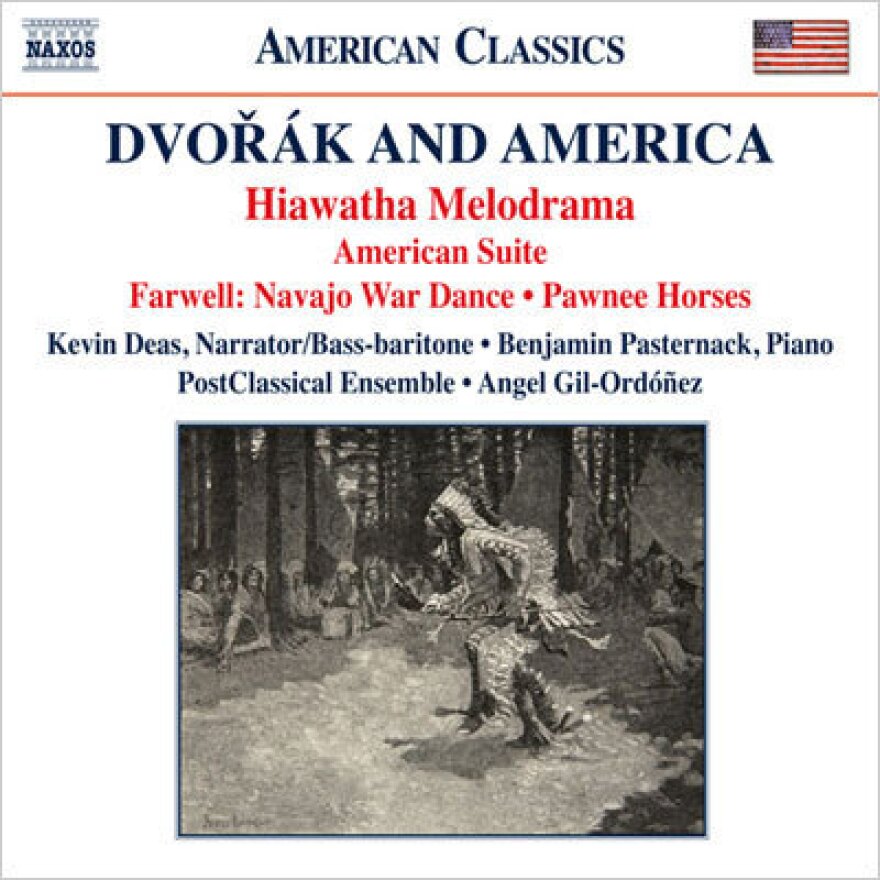DVORAK AND HIAWATHA
Is the New World Symphony about Hiawatha? Did Dvorak become an “American composer” during his momentous American sojourn of 1892-1895? Do his American piano works forecast Scott Joplin and George Gershwin? Did Dvorak represent a greater hope for American music than would Aaron Copland?
Tune into a no-holds-barred debate between Bill McGlaughlin and PostClassical Ensemble’s Joe Horowitz and Angel Gil-Ordonez, peppered with strong opinions and inside knowledge.
This next installment of “PostClassical” includes the Hiawatha Melodrama, mating Dvorak and Longfellow (named one of the best CDs of the year by Minnesota Public Radio), as well as Dvorak’s American Suite and “American” Humoresques.
We’ll also sample the “Indianist” cameos of the American Bartok: Arthur Farwell, who called himself the first composer to “take up Dvorak’s challenge.”
A unique radio experience.
This webcast contains over 35 additional minutes not included in the broadcast!!
Dvorak listening guide
DVORAK AND HIAWATHA
Part I: THE HIAWATHA MELODRAMA
7:00 – The Dance of Pau-Puk Keewis and the Scherzo from Dvorak’s New World Symphony
12:30 – Why does Dvorak’s symphony end with a dirge? Hiawatha’s Departure
17:50 – The Larghetto from Dvorak’s Violin Sonatina as a picture of Minnehaha and Minnehaha Falls
26:10 – Dvorak’s American Suite and his Indian mode
33:00 – The complete Hiawatha Melodrama, with Kevin Deas and PostClassical Ensemble conducted by Angel Gil-Ordonez, on PCE’s Naxos “Dvorak and America” CD
Part II: DVORAK’S AMERICAN SUITE
4:25 – Does the opening evoke Jerome Kern?
5:40 – The second movement’s “plantation song”
8:20 – The third movement’s minstrel dance, plantation song, and Indian elegy
13:13 – How an Indian dance becomes a minstrel song in the finale
15:35 – Is this “program music”?
17:35 – The complete American Suite, performed by pianist Benjamin Pasternack on PCE’s Naxos “Dvorak and America” CD
39:00 – Why is Dvorak’s “American style” more than an “American accent”?
40:02 – The Dvorak Humoresques in G-flat and F major (sounds like Gershwin), with pianist Benjamin Pasternack
53:00 – Dvorak vs Aaron Copland – why Gershwin is the real heir to Dvorak
Part III: THE AMERICAN BARTOK: ARTHUR FARWELL
00:50 – Farwell’s Indian War Dance No. 2, performed by Benjamin Pasternack
6:06 – Farwell’s “Pawnee Horses,” in versions for piano (Benjamin Pasternack) and 16-part a cappella chorus (The University of Texas Chamber Singers conducted by James Morrow)
17:00 – Dvorak/Fisher: “Goin’ Home,” sung by Kevin Deas with PCE conducted by Angel Gil-Ordonez
TO PURCHASE “DVORAK AND AMERICA” ON NAXOS: click here
TO LEARN MORE ABOUT DVORAK AND AMERICA: click here



